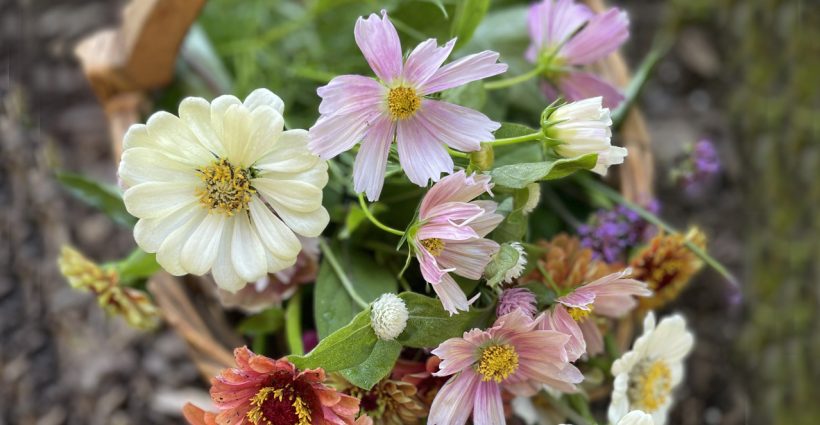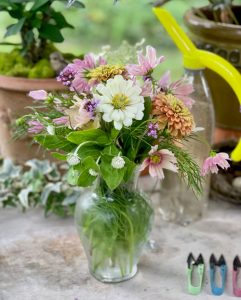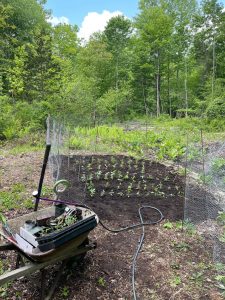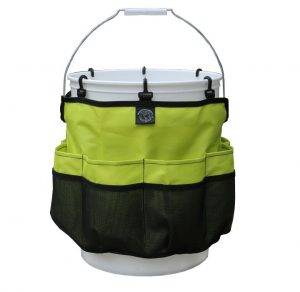designed for the way women work.

How to Create Your Own Cutting Garden
Category: Flower Gardens, Garden Planning, How-To Projects, Plant Ideas & Info, Presenting "The Curious Gardener"
Have you ever thought of creating a garden composed of flowers grown with the express purpose of being cut for floral arrangements? That’s a cutting garden. Once cutting gardens have been established, they tend to be low-maintenance projects that require just a little time each week for weeding and watering.
How to Create a Cutting Garden
Preparing the Site— Like most successful gardening projects, cutting gardens require a bit of planning. You can create a cutting garden within a vegetable garden, allotting a few rows to flowers, or you can give it its own space entirely.
We started planning our garden last winter. First we cleared an area of old vines and invasive shrubs and some trees, to ensure there would be enough sunlight on the site. Most annual flowers need 5-7 hours of sun a day. Our site is on the other side of our barn, so it can’t be seen unless you walk out to the barn and turn right.
Then we put up a simple 6′ high chicken wire fence around the 12′ x 12′ area where we wanted to plant. The fence was designed to keep deer away from the site. Flower gardens are not as desirable to other predators, such as woodchucks and rabbits, so your fence does not need to be as impenetrable as one for a vegetable garden would need to be.
Be sure you have a water source for your garden. We have a very long hose that reaches out to our cutting garden but it’s been so rainy this season we have not had to water it very much.
Selecting your flowers— I wanted to plant flowers that would provide continuous blooms throughout the season. Most annuals actually produce more flowers if you cut them. I wanted to start everything from seed, so I started ordering seeds in January and February. I ordered a few varieties of cosmos, zinnia, nasturtium, verbena, and I added a flower I’d never tried before, gomphrena, in a few varieties too.
You can grow your seeds indoors to get a head start on the season, or sow them directly in the garden. We have found success with starting seeds indoors and I find that it’s a nice way to extend the growing season. It might be snowing outside on an early April day here in New York, but our little seedlings are coming along under their grow lights and waiting for spring. It is truly one of the most positive, life affirming things I know of, to watch seedlings grow!
Click here for tips on seed-starting that we wrote based on the NY Botanical Garden method of seed germination. If you choose to start your seeds indoors your seedlings will be ready to move into your new garden after the last frost of the season has passed, and when nighttime temperatures hover around 60 degrees.

I also planted my dahlia tubers in the cutting garden. I don’t expect them to produce flowers until late in the season.
Planting out your garden— Traditionally, cutting gardens are organized through wide-row gardening — in which rows are planted a couple of feet apart. This ensures you’ll have adequate space to move around to water and weed your garden, and cut your blooms. Within the row I tend to plant my seedlings closer to each other than is recommended on the seed pack. This way they act as support for each other when they get tall.
Before planting our seedlings we ordered some compost from a local garden center and laid down about 3″ of it across the whole surface of the garden. This adds nutrients to the soil to help plants thrive.
Cutting your flowers–It’s best to cut early in the morning when the stems are filled with water. Use a sharp cutting tool and bring a basket or bucket caddy with you to carry your flowers. Place your cut stems in a bucket of warm water and place the bucket in a cool space indoors out of direct sun (or in the dark) for a couple of hours before arranging them. They’ll last longer that way. This process of preparing your flowers so the blooms will last longer after they’re cut is called ‘conditioning.’ Click here to see this article we wrote about annuals and how to condition them.
When you are ready to begin arranging your flowers have a sharp cutting tool handy and one of our Eco Spouts, which is great for reaching in between the flowers without disturbing them.
Maintaining Your Garden— Annuals, which are a staple of most cutting gardens, will grow more blooms the more frequently you cut them. If you want longer stems, cut further down even if it means cutting off a few buds. New buds will quickly grow where those were cut off.

Cutting gardens are a simple and inexpensive way to make sure you have fresh flowers in your home or as a gift for friends all summer long. Do you have your own cutting garden? Share a picture on Instagram and tag @Womansworkco — we would love to see what you’ve grown.



